Cross with caution: Lack of oversight creates safety risks at private railroad crossings
R’Mone Clark received the news seven hours after the accident. His father, Mikeral Leon Clark, had died after a Norfolk Southern train struck his tractor-trailer in Kernersville, North Carolina.
His father had driven over a private railroad crossing but stopped on the other side of the tracks, apparently waiting for a break in traffic to turn onto a two-lane road. Limited road space left his trailer hanging over the tracks.
Then came the train.
It struck the 55-year-old’s truck near the gas tank and pushed it down the tracks. The truck caught fire. Mikeral died from smoke inhalation.
At the time of the accident, the private crossing – which provides access to a scrap metal business – had no lights or barrier arms, just a white, X-shaped sign that read “Railroad Crossing” known as crossbucks and one stop sign.
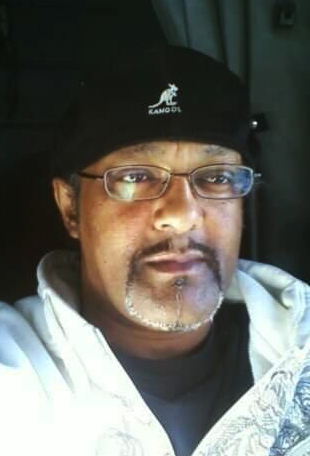
Such private crossings tend to fly under the radar, receiving far less scrutiny and funding than their public counterparts. Accidents are 3½ times more likely to occur at public crossings but, in nearly half of the states, USA TODAY found a private crossing logged the most accidents or tied for the highest number.
The crossing in North Carolina was familiar to Mikeral. He had delivered loads of scrap metal to the business, Omnisource, twice a day and had more than 30 years' experience driving a tractor-trailer.
“My father pretty much sacrificed himself instead of pulling out in front of traffic to miss the train,” R’Mone said.
The accident on Aug. 28, 2019, was one of five at the crossing since 2014. It happened at a designated private crossing, one of 165,000 across the country surrounded by land that belongs to a private owner. More than 15,000 allow drivers to use them to reach such locations as residences and businesses, campgrounds and other recreational facilities.
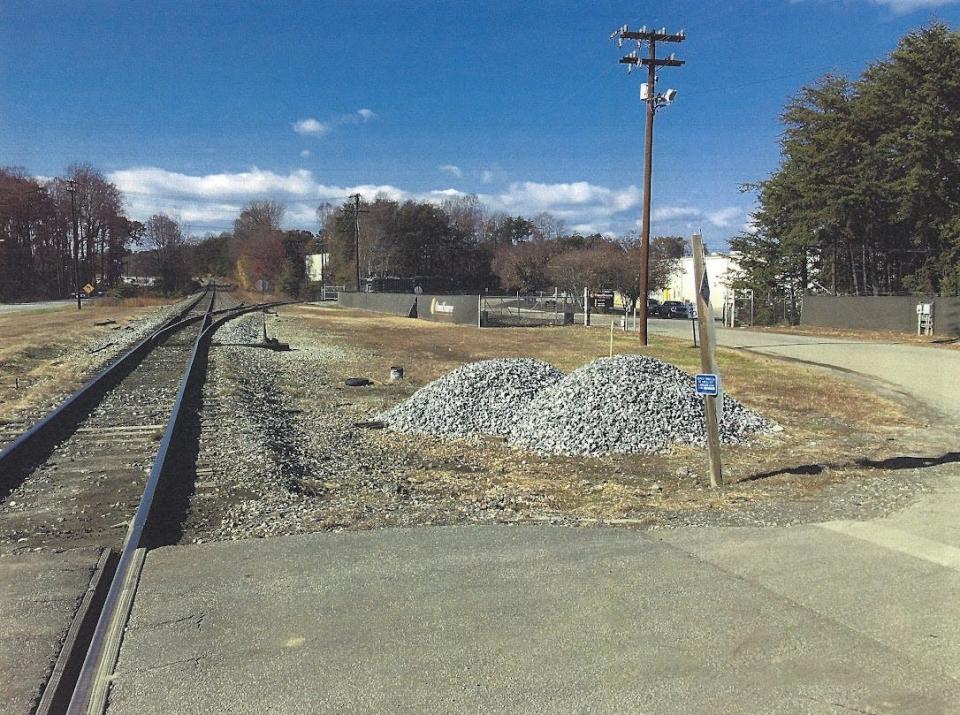
Late last month, an Amtrak train struck a car at a private crossing on the other side of the country, in Brentwood, California, leaving four dead. The train was traveling from Bakersfield to Oakland, and the car was traveling to an event on private property next to the tracks. The crossing where they met was not officially open to the public.
These accidents and thousands more over the past decade underscore the dangers of private crossings, which often lack safety features. The Brentwood crossing had two stop signs, one on either side of the tracks, but no lights, gates or barrier arms.
Safety measures at public crossings are reviewed by departments of transportation, public utilities commissions and railroad companies. The jurisdiction over private crossings is often left to 100-year-old paper agreements between original landowners and railroad companies, with no universal standards.
In many instances, it is unclear who is responsible for safety at a private crossing. When something does go wrong, even preventing future accidents proves difficult.
Where the responsibility falls is “really complicated” for private crossings, according to James Payne, staff director for the grade crossing and trespasser outreach division of the Federal Railroad Administration's safety office.
From Payne’s perspective, landowners should be held responsible because they knowingly entered into agreements with railroad companies. But he acknowledged that oversight of private property remains a touchy issue.
“You’re talking personal private property, and where does the government’s role fit within that, especially at the federal level?” Payne asked.
After his father’s accident, R’Mone contacted six attorneys seeking to file a wrongful death or a faulty design lawsuit. None would take his case because a North Carolina law prevents the state department of transportation from regulating private crossings. The department has authority over private crossings only if they intersect with roads in the state highway system.
The 165,000 private crossings in the United States account for 38% of all crossings. A USA TODAY analysis of crossing inventory data from the Federal Railroad Administration, one of 10 agencies within the U.S. Department of Transportation, found:
Over the past decade, at least 3,224 incidents occurred at private crossings. Nearly 300 motorists, passengers in cars and railroad employees have been killed.
More than 400 private crossings have been the scene of more than one accident in that time frame; 137 of them have more than two. One private crossing in Cook County, Illinois, saw 23 accidents in the past 10 years.
In nine states, the crossing with the most accidents over the past decade was a private crossing. In 11 states, a private crossing tied with a public crossing for the most incidents. Only three of these 20 states have more private crossings than public.
Ronald Eck, an engineering professor at West Virginia University, noted that a variety of safety concerns come into play with private crossings. Sight distance down the tracks may be blocked by overgrown trees or decayed timbers between the tracks may catch tires, causing drivers to focus more on the surface instead of looking for trains.
“These are sort of the forgotten crossings,” he said.
The Department of Transportation's Federal Railroad Administration reported to Congress in 2019 results of a study of private railroad crossings a review required four years earlier by the Fixing America’s Surface Transportation Act. It found data and oversight of private crossings lacking.
The study recommended standard warning devices and periodic inspections. It also found a crazy quilt of regulations and oversight in the void of federal laws, regulations or a government entity with regional or nationwide jurisdiction.
Identifying owners of private crossings can be difficult, complicated and time-consuming, it noted. When ownership changes, it found the new landowner often did not report the change to the railroad.
Some states do regulate warning devices, but it is most often negotiated between the landowner and railroad. Local authorities tend to be reluctant to exercise jurisdiction because the crossings are on private property.
“This is literally a regulatory nightmare,” said Rick Shapiro, an expert in railroad law.
In the accident involving his father, R’Mone contacted OmniSource, the owner of the property at the private crossing. He received no response for more than a month, he said, until he was referred to the company’s attorney. The attorney communicated with a lawyer R’Mone had hired, he said, who then declined to pursue the case.
OmniSource did not respond to USA TODAY’s requests for comment.
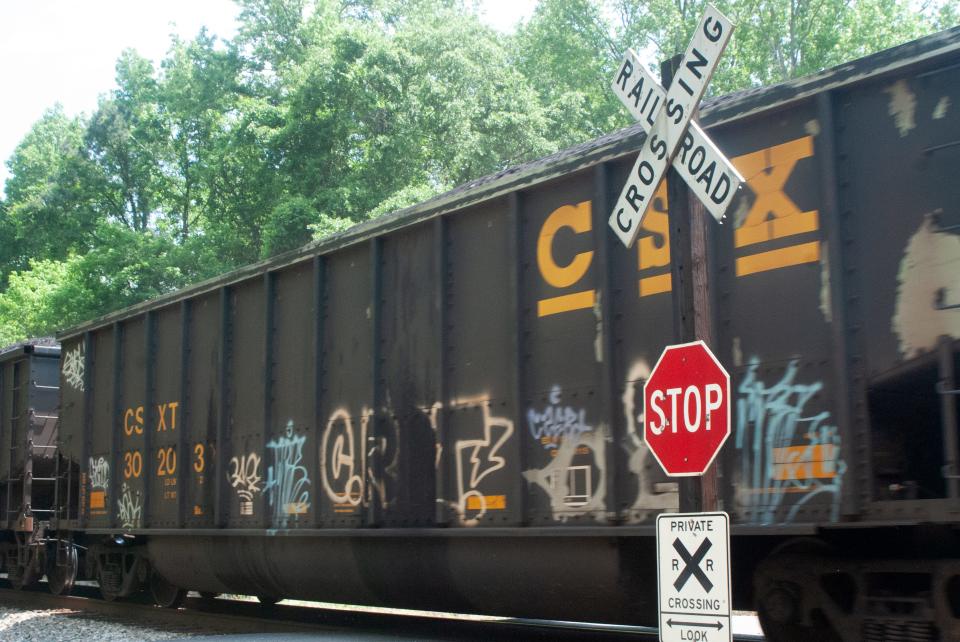
Agreements may be buried in a filing cabinet
A 2021 analysis of state laws from the Federal Railroad Administration found that 11 states do not have statutes related to private crossings. When they do, sometimes those statutes relate to issues other than regulating safety features, such as protocols for closing private crossings, crossings on farms and installing fencing or cattle guards to keep wildlife off the tracks.
Instead, agreements between landowners and railroad companies may determine who is responsible for a private crossing and the safety features it needs.
In some cases neither the railroad company nor property owner know the details of these agreements, according to David Clarke, director of the Center for Transportation Research at the University of Tennessee, Knoxville.
In theory, he said, “there’s a piece of paper for every private crossing.” But in reality, it may be “sitting in a file cabinet in some storage room in the railroad’s offices 1,000 miles away.”
Clarke said private landowners must obtain permission to build a road over railroad tracks, which are considered the railroad company’s property.
“The railroad has a huge amount of input into the terms and conditions under which this crossing is granted,” he said. “They have the right to close it, they have the right to charge a fee, require the property owner to pay for maintenance and installation of the crossing and they can dictate the protection they feel is reasonable.”
Railroad companies may agree to install warning devices but then bill the landowner, according to Augustine Ubaldi, a railroad engineering expert.
Private crossings frequently used by the public, or designated for public access, should be carefully examined given they represent “a much higher potential for accidents,” Clarke said. Railroad companies, he added, are often unaware of the volume of traffic using the crossing.
“It might have been when they entered into the agreement with the property owner, it was undeveloped,” he said, “and nobody checks on that over the years.”
A string of tragedies at private crossings
Pieces of a Honda Odyssey are still scattered on either side of the railroad tracks near a private crossing in New Kent County, Virginia, one year after a freight train struck the van.
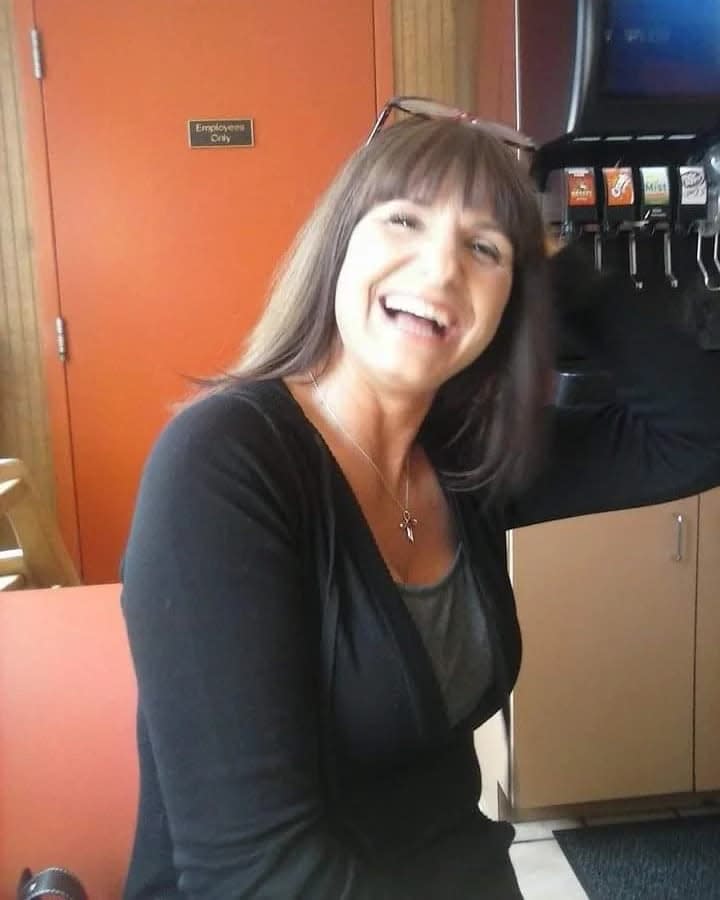
When Freeda Pruitt, 55, approached the crossing to return to the mobile home park where she lived, the only safety feature was a stop sign, crossbucks and a private crossing sign.
Whether Pruitt stopped is unknown, but she never made it to the other side. A CSX freight train estimated to be traveling 45 mph T-boned her car.
“I’ve talked to everybody, and literally everyone’s like: ‘Well, they’re not my tracks. It’s not my responsibility,’” said Pruitt’s daughter, Jennifer Jones. “They’re all just pointing the finger and it’s like: ‘What do you mean? People are dying.’ ”
The crossing where Pruitt died is one of three private crossings along Rockahock Road in New Kent County, a string of crossings where other accidents have occurred.
Less than half a mile down the street, Sarah Pence lost her husband at a private crossing that leads to the Rockahock Campground.
An Amtrak train traveling 66 mph struck Kevin Pence’s SUV in June 2021. Pence’s son, who was 6 years old at the time, survived with minor injuries.
Kevin was pronounced dead at the scene. It was his birthday and the eve of his wedding anniversary.
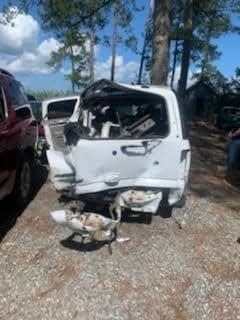
Sarah Pence said she had never considered the crossing dangerous. It has crossbucks and stop signs but at the time of the accident, she said, trees blocked the view down the tracks, forcing drivers to pull onto the crossing to look both ways before proceeding.
“I feel like if there were crossing bars there and some kind of noise letting you know that a train was coming, that would have never happened,” she said.
She pursued a lawsuit against CSX, one of the nation's largest railroad companies, with 21,000 miles of track. Pence said the company denied fault and nothing came of it.
CSX declined to respond to USA TODAY's requests for comment before publication.
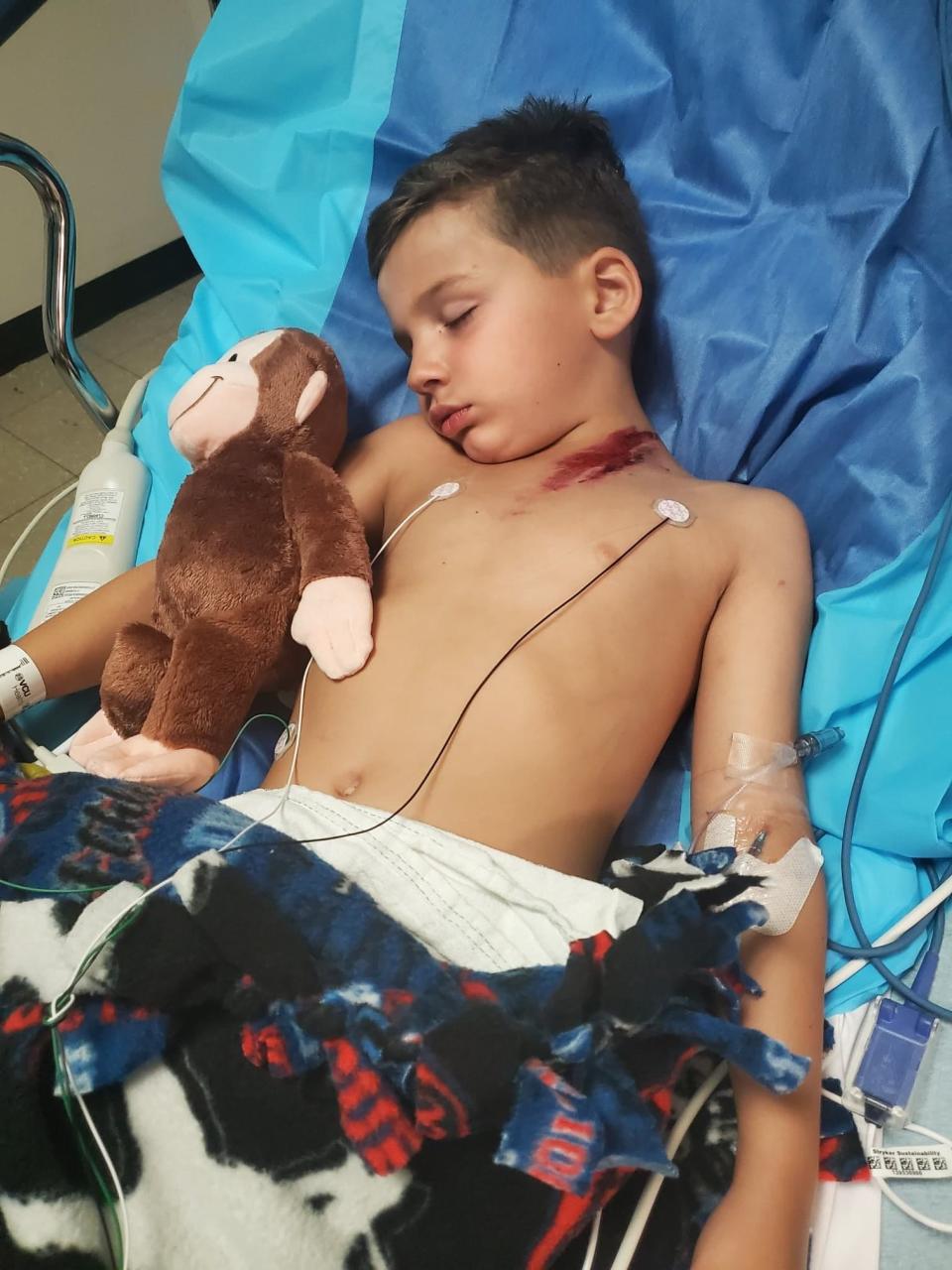
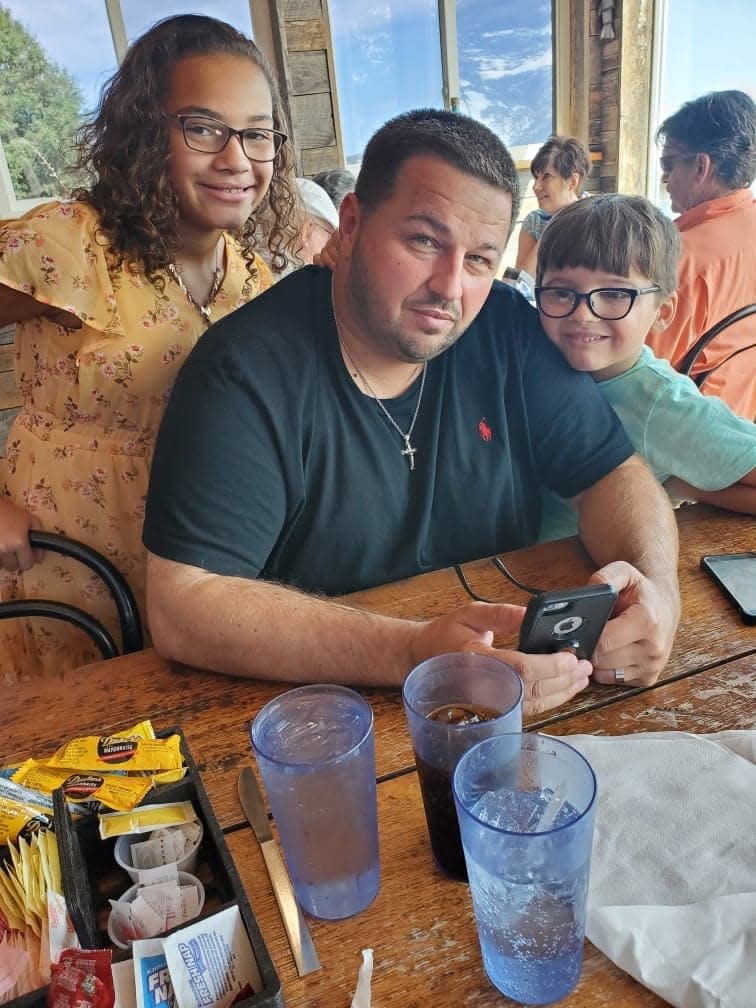
A month before Kevin’s accident, Bobby Pearce was towing a boat over the same crossing with his father, who was driving. They were headed to the campground for a fishing trip.
Pearce and his father – a driver’s education instructor for more than 40 years – saw the lights of an Amtrak train while crossing the tracks.
Pearce’s father slammed on the gas, and the truck cleared the crossing. Both heard what sounded like a bat hitting the back of their boat. The train struck the boat’s engine, jettisoning the engine down the track.
“I’ve never seen anything like it,” Pearce said. “It just took it straight off.”
Pearce also recalls that their view was blocked by vegetation – which he said he believes has since been removed – and by a truck leaving the campground.
“Had the train hit the middle of the boat, it could have spun the truck around,” he said, “who knows what happens?”
Randy Caldwell co-owns the property at the Rockahock Campground. He estimates that at least 500 people drive over the crossing there each day.
According to Caldwell, the only agreement he has with CSX includes a deeded right of way for the railroad. That covers the tracks owned by the company and 25 feet on either side.
Since buying the property at auction in 1996, Caldwell said he has met with state and county officials about the crossing. He said CSX has been unresponsive to safety concerns.
“My feeling is that their attitude is ‘Less said, best said,’” he said.
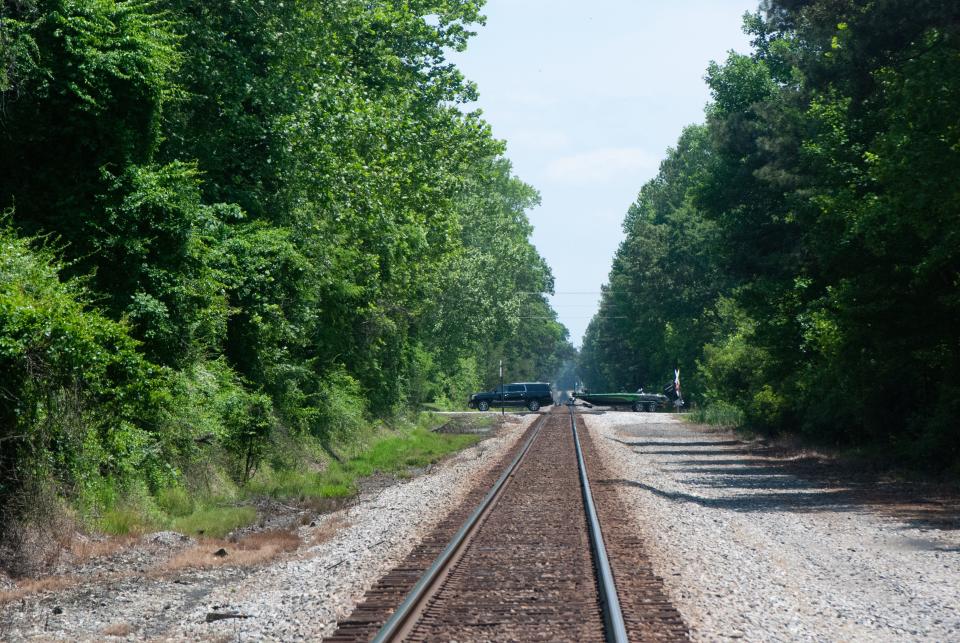
Federal safety standards don’t automatically apply
The Federal Highway Administration’s Manual on Uniform Traffic Control Devices is the national standard for traffic control devices for streets “open to public travel.” This designation does not include private crossings.
The manual recommends at least a white crossbuck sign plus either a stop sign or yield sign at public crossings. It does not specify warning devices for private crossings.
The bare minimum for safety features at both public and private crossings is a blue emergency notification sign, Payne said, with a toll-free telephone number to report emergencies or problems on the tracks. Public crossings must also have either crossbucks or stop signs.
Some states have their own requirements for signage, but without nationwide rules those requirements vary widely, from identifying who is responsible for maintaining traffic control devices to who pays for the maintenance.
Mike Allen, an associate at railroad consulting firm R.L. Banks & Associates, served for a decade as deputy coordinator of New Jersey Operation Lifesaver, an organization that promotes rail safety. He has worked with carriers and engineering firms on issues related to railroad rights of way.
“The application of the (federal highway standards) to private crossings becomes ‘It’s nice to do it this way, but if we don’t have that much money, we don’t have to,’” Allen said.
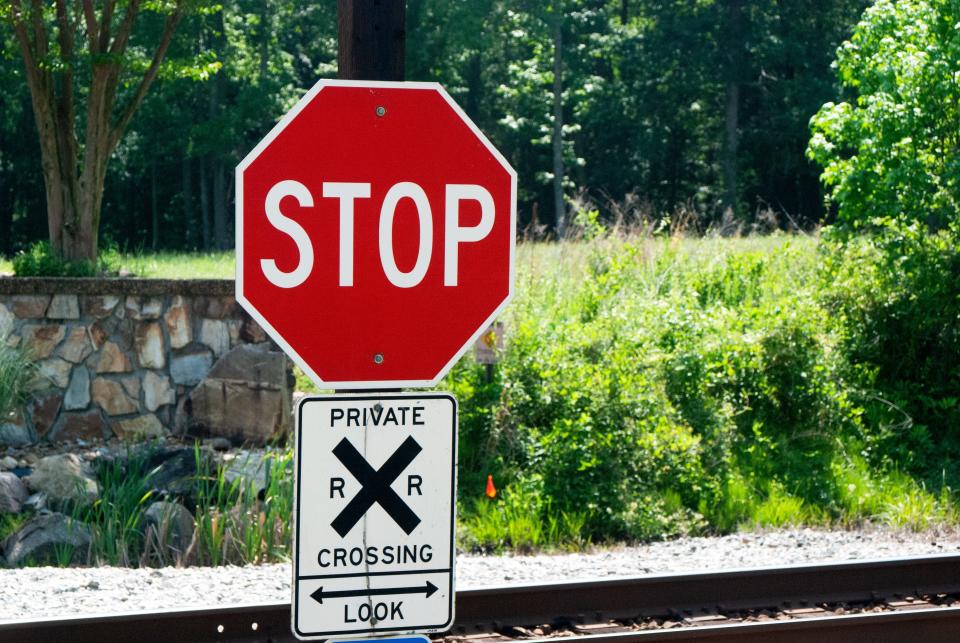
Ubaldi, the railroad expert, notes that the manual recommends that engineering diagnostic teams periodically examine all crossings for safety risks. If a crossing is found to be dangerous, the railroad should intervene with upgrades, he said.
“I imagine the private crossings, because they are private, pretty much slip under the radar of public utilities commissions,” he said. “In fact in some cases, what will happen is that they don’t even bother to look at them.”
Nick Little, acting executive director for the Center for Railway Research and Education at Michigan State University, acknowledged that enforcing safety features at private crossings is challenging.
“It’s much more difficult to get a regulation passed that affects just a piece of private land crossing another piece of private land,” Little said.
In December 2020, the Federal Railroad Administration required states to develop and submit action plans to improve safety at both public and private crossings.
The site action plan for Virginia, the state where Freeda Pruitt and Kevin Pence lost their lives, is underway.
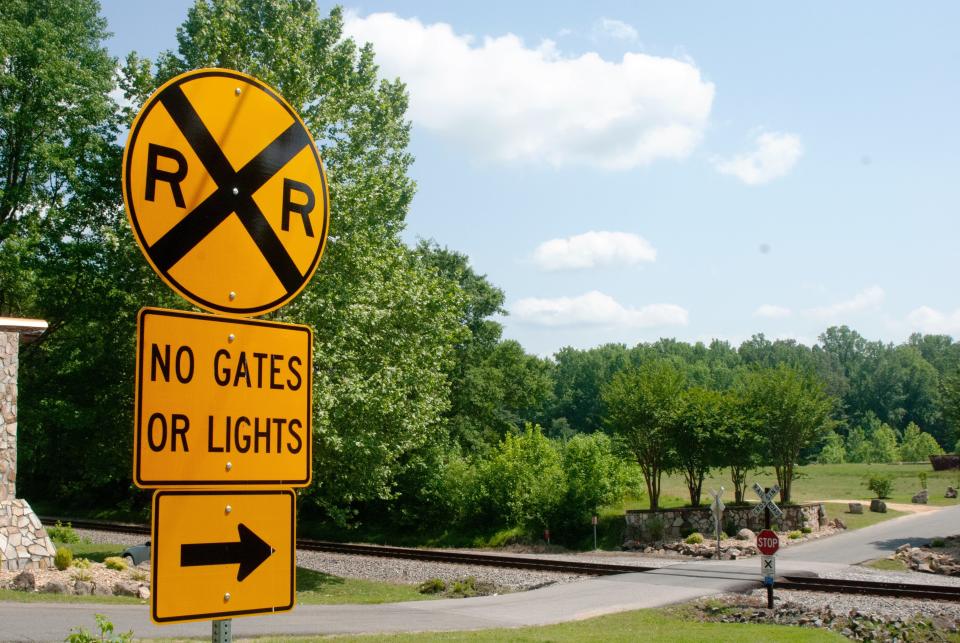
Funding for private crossing safety usually falls short
The Federal Highway Administration manages the Railway-Highway Crossings Program that provides funding for eliminating hazards at public crossings – not private. The program is federally funded and state-administered.
Passage of the bipartisan Infrastructure Law last year authorized the Railroad Crossing Elimination Program. That program is administered by the Federal Railroad Administration, which provides funding to states, local governments, a subdivision of a state, an Indian tribe, a public port authority or a metropolitan planning organization for railroad crossing safety.
Private crossing owners are not eligible.
After the Brentwood accident and another involving Amtrak at the end of June, President Joe Biden and the U.S. Department of Transportation announced an additional $573 million for the program. In addition to safety measures, the funding can be used to eliminate delays at crossings and lower the costs of transporting goods.
Payne said the administration may consider applications for larger projects where a private crossing has been clumped with public crossings.
“The greater issue with private crossings is there’s not a funding stream generally available to address any issues with those like there are for public crossings,” said Clarke, of the University of Tennessee, Knoxville.
Nothing prevents railroads from making repairs and upgrades on their own, but Allen, the railroad consultant, said some railroads may weigh the cost of adding warning devices to a crossing versus the likelihood of an accident.
Because private crossings tend to have less traffic, “the likelihood is a lot less, therefore the motivation to spend money is a lot less,” he said.
Allen said repeat accidents at the same crossing should be closely examined. One crossing south of Chicago in Harvey, for instance, was the scene of 23 accidents in the past decade.
According to accident reports filed with the Federal Railroad Administration, incidents involved trains striking semi-trailers and trucks. The crossing leads to a terminal for Canadian National, a railroad company that operates in Canada and the United States.
“I lean toward let’s get it fixed, because the downstream costs of the collisions can be hellacious,” Allen said.
Shapiro, the railroad expert and a Virginia-based personal injury attorney, said lawyers representing crossing victims often complain that there is no adequate, clear or regulatory authority laying out who has to pay for upgrades at private crossings.
“The railroads want to point the finger at the municipalities or others and want to claim that it’s not their duty,” he said.
Railroad companies referred questions to the Association of American Railroads.
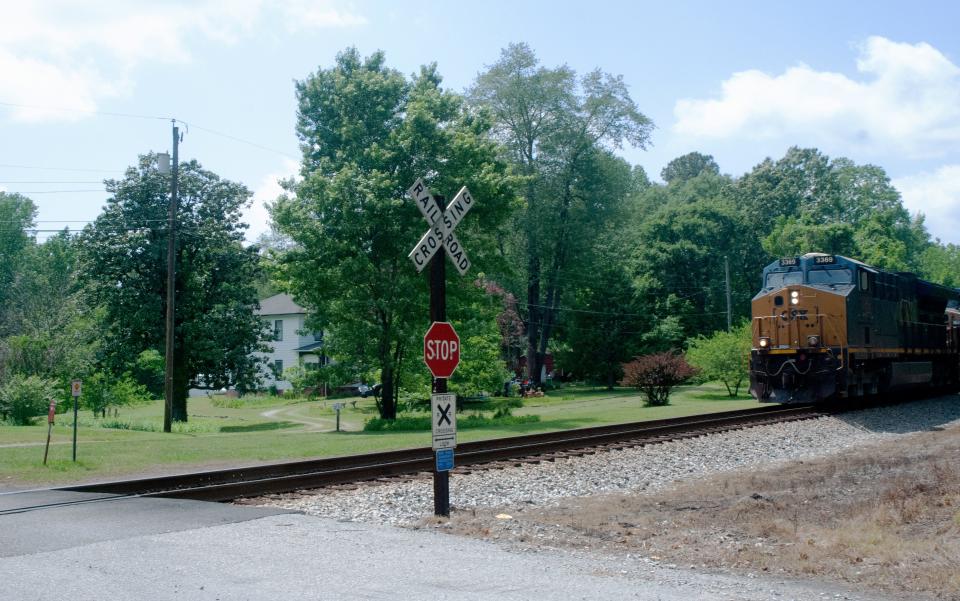
Mike Rush, senior vice president of safety and operations at the association, said railroads are only on the hook for maintaining the actual crossing and their right of way – a narrow space along the tracks. When it comes to the roads that lead up to a crossing, he said, that’s the jurisdiction of the highway authority or the owner of the road.
“If there is a private crossing which actually does involve a significant amount of public traffic, that public access is going to be beyond the railroad’s control,” Rush said.
When it comes to improving protection at a crossing, he added, the focus is going to be on public crossings where the most fatalities occur.
“That’s not a panacea, but it helps,” Rush said. “Certainly to reduce the risk, you want to put your money where the highest risk is and by definition I think those are going to be public crossings.”
Families of victims seek solutions
In a rural community south of Akron, Ohio, Vicky Moore lost her 16-year-old son in 1995 in an accident that killed two other teenagers at a public railroad crossing.
Moore formed the Angels on Track Foundation to promote railroad crossing safety. She has since traveled across Ohio to develop task forces to identify dangerous public and private crossings and install barrier arms.
The foundation has paid for 17 sets of crossing gates in Ohio with $400,000 in reimbursement grants.
Moore also started a website where Ohio residents can report dangerous crossings, which has received several thousand completed forms since 2006. The reports are sent to the Ohio Public Utility Commission, the Ohio Rail Development Commission and the Federal Railroad Administration.
“Everybody involved is put on notice,” she said. “Then, if nothing is done, they know we have notified them and we have a copy in our database, and then they’re going to have to explain why they didn’t do anything.”
R’Mone Clark contacted representatives in North Carolina and the National Transportation Safety Board to see whether there were legal grounds to require businesses to install safety devices at private crossings like the one where his father died.
He started a Change.org petition in May to push for legislation that would allow the state department of transportation to require protection at private crossings. The petition has more than 170 signatures.
“Hopefully it’ll create some waves across the nation to make sure that people are safe and protected,” Clark said. “I just want to ensure no other family has to deal with what my family and myself have dealt with in trying to right this wrong.”
After Kevin Pence was killed in New Kent County, Virginia, county officials at a board of supervisors meeting discussed the unprotected crossings along Rockahock Road.
Freeda Pruitt’s daughter Jennifer Jones attended.
“It was very hard to sit through,” she said. “I kind of felt like I was a distraction because I couldn’t stop crying.”
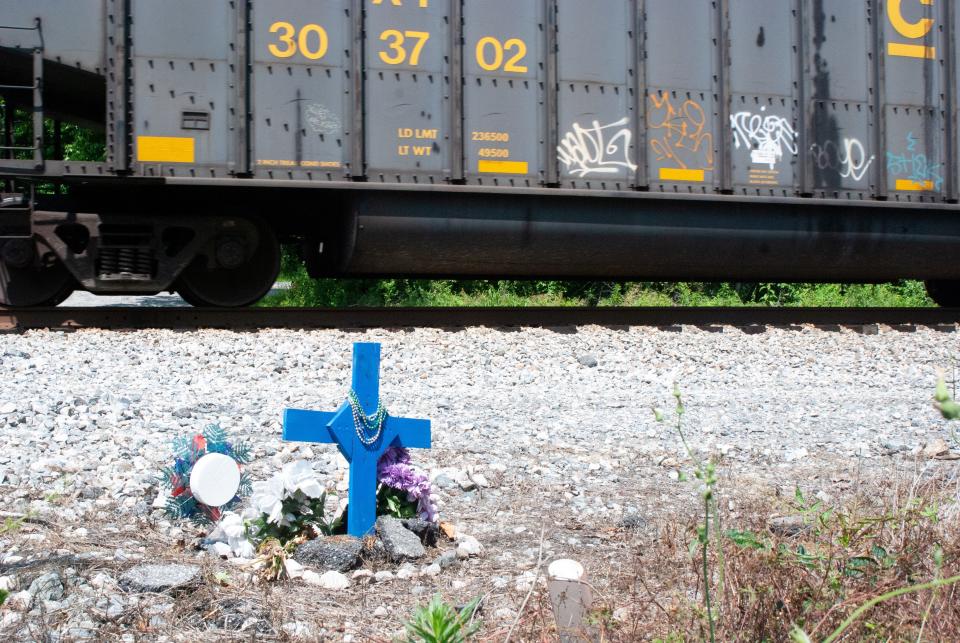
Former Virginia Transportation Secretary Shannon Valentine and Virginia Rep. Rob Wittman attended the meeting virtually. Valentine said they were working with the State Corporation Commission, Federal Railroad Administration and CSX to see what could be done.
“We have no authority to require CSX to make improvements on their rail line,” New Kent County Administrator Rodney Hathaway said.
The board approved the Railway Crossing Assistance Grant and Loan Program to assist private businesses with crossings on their land. Hathaway said the money would go toward purchasing larger signs or adding pavement markings on roads leading to crossings.
The county has received no applications for the grants and loans, however. Hathaway said property owners expressed concerns that making improvements to crossings would leave them legally liable.
Indeed, Caldwell – the co-owner of the campground property – said he was aware of the county program but thought he would be blamed if the equipment failed.
By contrast, government entities that oversee public crossings are not responsible when equipment fails. The liability instead falls to the railroad.
“I said I’m willing to assume the identical liability posture as the Commonwealth of Virginia, and I don’t think you can ask me to do more than that reasonably,” Caldwell said.
Jones called the railroad company, the department of transportation and state representatives to advocate for more protection at the crossing where her mother died. Nothing was done, she said, and the property owner declined to talk to USA TODAY on the record.
Jones said she was contacted by a lawyer but decided not to pursue the case.
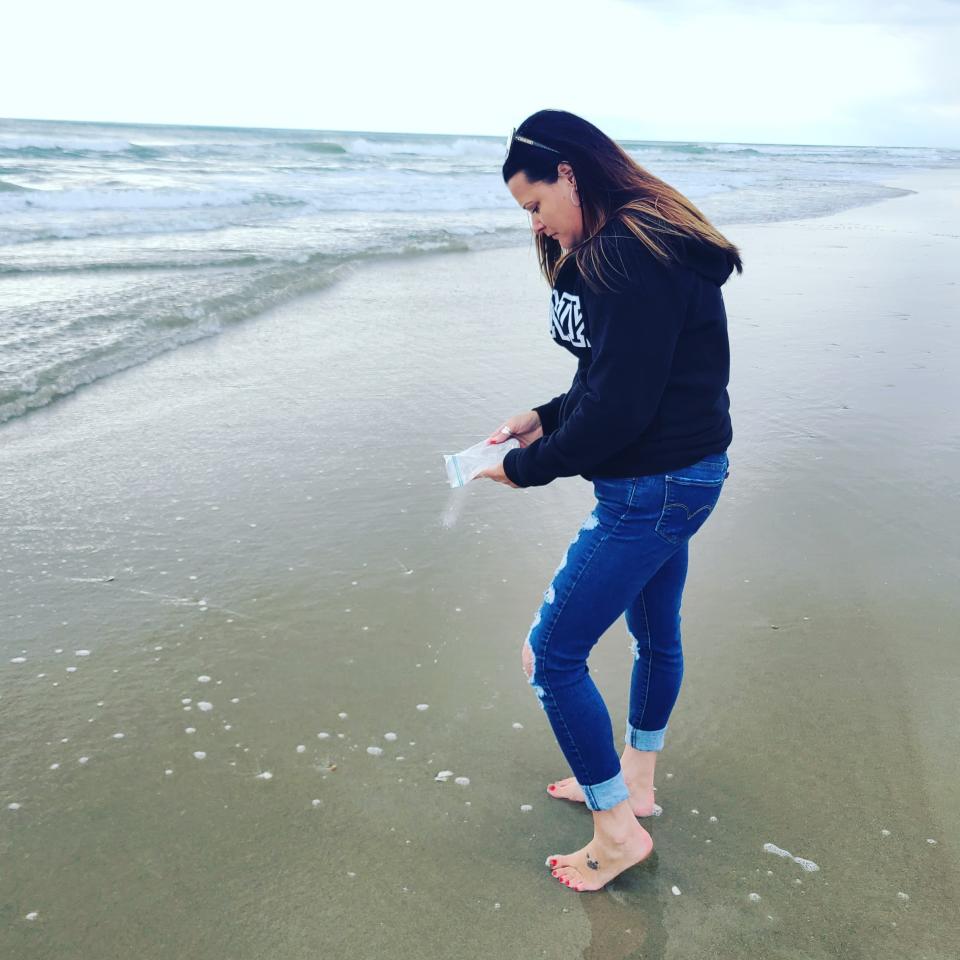
“I’m not looking for money,” she said. “I’m looking to make sure that my daughter doesn’t cross those tracks and die.”
Since the accident, Jones visits the tracks to place flowers on a cross in memory of her mother. On her trips to the memorial, she said, she never drives over the tracks.
“I just park outside it and walk across.”
Contributing: Kevin Crowe, USA TODAY
Rachel Looker is a USA TODAY Washington Watchdog Fellow and researched this article as she pursued her master's degree at American University. She can be reached at RLooker@usatoday.com or @_RachelLooker.
This article originally appeared on USA TODAY: Private railroad crossings: Who ensures safety after accidents happen?

